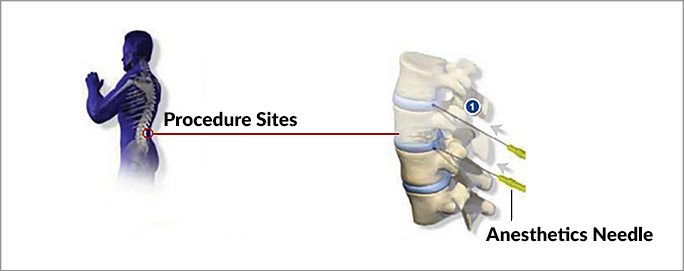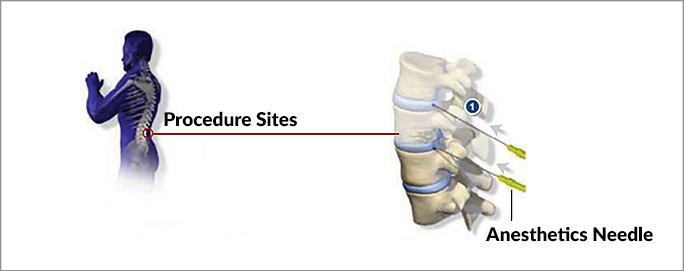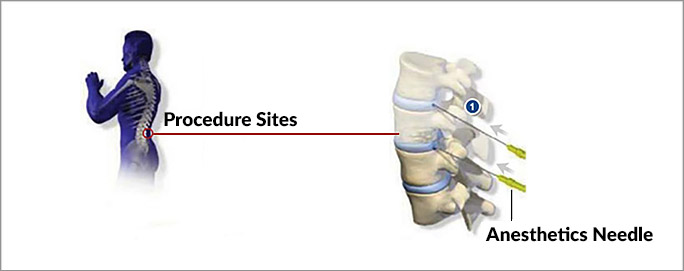Discography
Many people have discs that look abnormal on an MRI but are not related to their pain. Discography is a test performed to determine which disc, or discs if any, are related to your pain. Typically this type of test is performed in the lumbar spine (low back) or cervical spine (neck). If fewer cases, Discography is performed in the thoracic spine (mid-back) area.
There are at least two parts to each Discography test that can give your doctor helpful information. The first part of each test involves injecting dye that can be seen on x-rays into the center of the discs. This is the imaging part of the test. In a normal disc, without degenerative changes or tears, the dye stays in the center of the disc. If the disc has torn fibers, the dye spreads into the damaged areas.
If the disc has severely degenerated, the dye spreads throughout. The second part of each test involves the evaluation of the pain. Information about the location and intensity of pain experienced during the injection will help your doctor to determine which disc(s) if any, are related to the pain for which you are seeking treatment.

- Do not eat any solid foods after midnight prior to your discogram. You may have clear liquids the morning before your discogram.
- Dress comfortably in a warm-up suit, sweats or shorts – you will need to change into a gown.
- Let the nurse and doctor know if you are pregnant or may be pregnant, are diabetic, have a history of epilepsy or seizure, are allergic to any medication or have had any reaction to x-ray dye or xylocaine.

The procedure usually takes about 40 minutes:
- You will lie on your stomach and side.
- Patients are generally given a light sedative, but need to be awake to provide information during the evaluation.
- The skin in the area of the injection will be cleaned.
- A local anesthetic will be injected.
- Fluoroscopy, a method used to make images, will be used as the physician passes the needles into the discs. Generally, three discs in the lumbar spine are tested. Fewer may be injected in the cervical spine.
- Dye will be injected into each disc tested.
- As the injection is made into each disc, the doctor will ask you questions about the location and intensity of any pain that the injection provokes.
- X-rays will be made.

- Often, a CT scan after the discogram to get as much information as possible about the structure of the discs.
- You will be in a recovery room for about 30 minutes.
- You must have someone to take you home.
- You will have a follow-up appointment with your doctor after the discogram to discuss the findings.

